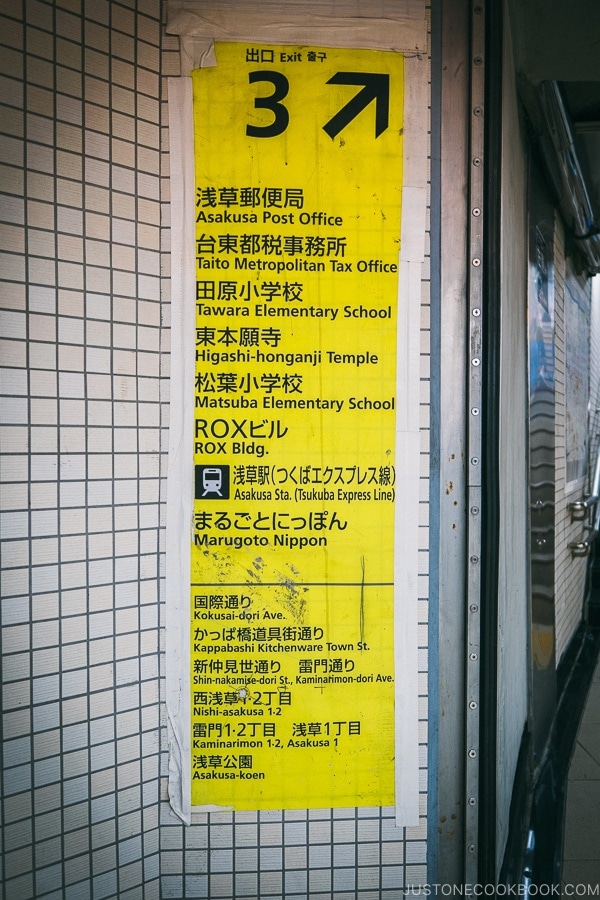Looking for Japanese kitchen tools and gadgets for your home kitchen or restaurant? Then Kappabashi aka Kitchenware Street is a must stop for your visit to Tokyo.
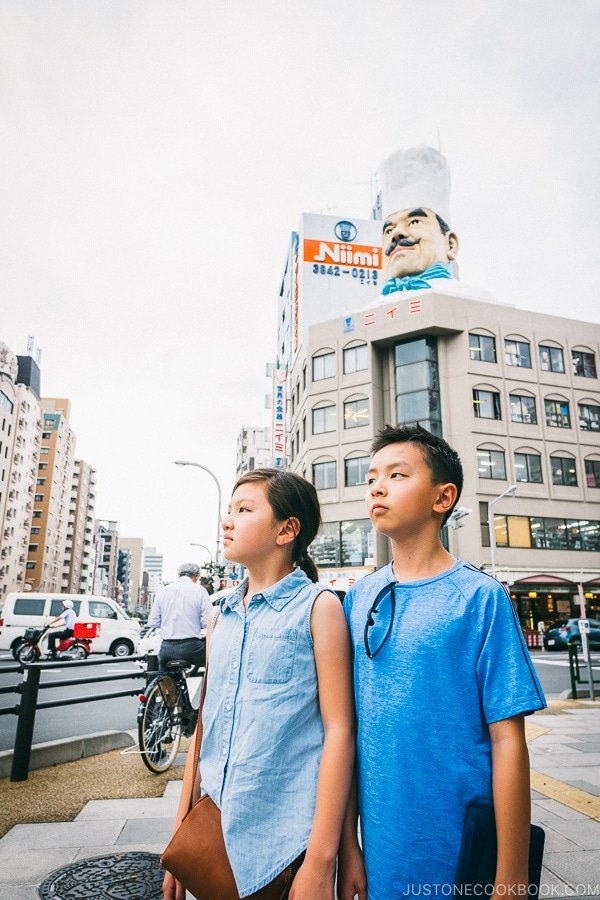
We often get asked by friends and readers on Japan travel tips and itineraries so we try our best to share our Japan experiences on the blog. However, one city we didn’t have much travel content on was Tokyo. Why? Since Nami’s family only lives 7 miles (15 km) from Tokyo and 15 miles (23 km) to Shibuya, it never seemed like a “Japan travel destination” for us.
As we get repeated request for Tokyo travel guide, we spent 6 days this past summer in Tokyo exploring different wards, activities to do, places to visit and eat. This is just the beginning of our Tokyo travel guide and we’ll continue adding to these posts as we explore new adventure and experiences. We hope you will enjoy traveling throughout Tokyo with our family.
The reality is that it’s impossible to finish exploring Tokyo in 6 days, or even possibly a month. There are simply way too many options for dining, sightseeing, and entertainment! This is our first effort to share Tokyo with you and we hope you’ll enjoy our journey. There is something for everyone in Tokyo so pick and choose what your heart desires when you visit.
For the Tokyo travel guide series, we’ll share the following posts:
- Shinjuku 新宿
- Meiji Jingu 明治神宮
- Harajuku and Omotesando 原宿・表参道
- Shibuya 渋谷
- Roppongi 六本木ヒルズ
- Tokyo Tower (update) 東京タワー
- Ginza 銀座
- Imperial East Garden 皇居東御苑
- Akihabara 秋葉原
- Ueno 上野
- Kappabashi かっぱ橋道具街
- Tokyo Dome City 東京ドームシティー
- Asakusa (update) 浅草
- Tokyo Sky Tree (update) 東京スカイツリー
- Odaiba お台場
You might notice there are many areas/wards/stations we missed in Tokyo from the above list, like Tokyo Station. It’s because we simply ran out of time to cover and will add it in a future trip. If you have any specific requests, please comment below and we’ll try to add it to our future itineraries.
Kappabashi かっぱ橋道具街
Every summer when Nami goes to Japan, one of the stops she has to make is Kappabashi Kitchen Town in Tokyo. It’s where she picks and selects the Japanese kitchenware (read 10 Cookware & Tableware You Should Get from Japan) and tools to bring back to the US for our food photography and video. With around 200 stores that cater to the food business, you can find every imaginable Japanese kitchen product in Kappabashi. Ready to go check them out? Let’s go.
How to Get to Kappabashi
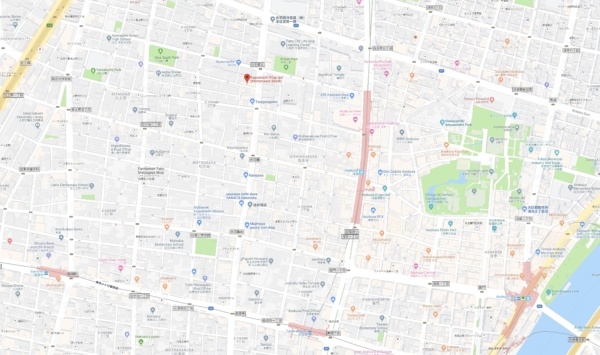
Kappabashi is conveniently located between Ueno and Asakusa stations. We arrived there by exiting Tawaramachi Station on Ginza Line. If you take the same train, when you first exit the station, instead of kitchenware stores you’ll see many Buddhist altar specialty shops. Don’t worry, you’re in the right area. Just keep walking west and soon you’ll see the iconic statue of the jumbo chef on top of Niimi building.
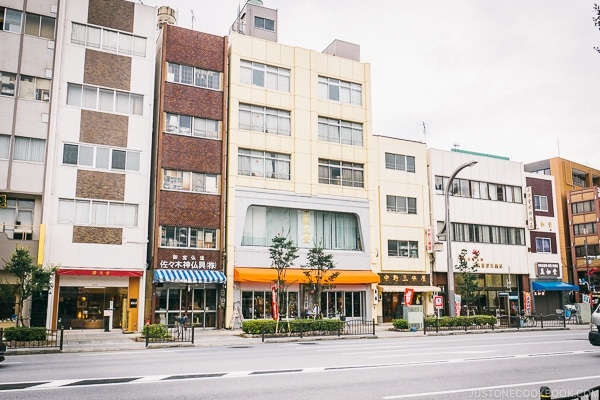
Niimi is one of the largest kitchenware stores in Kappabashi. It has 2 large floors of kitchenware carrying almost everything you need for Japanese cooking, from bamboo sushi mats to giant vats for cooking ramen broth. The building with the jumbo chef is their Japanese cooking focused shop and they have a western cooking shop equally large across the street.
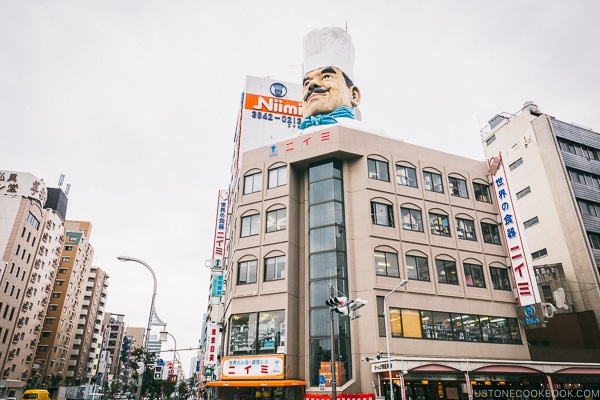
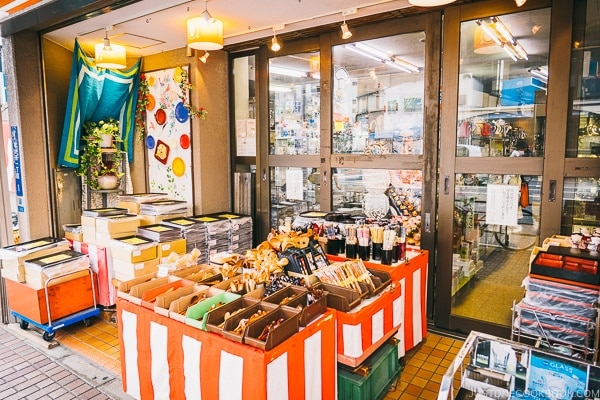
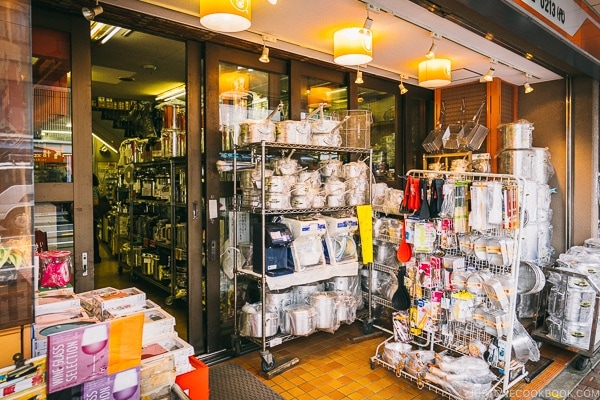
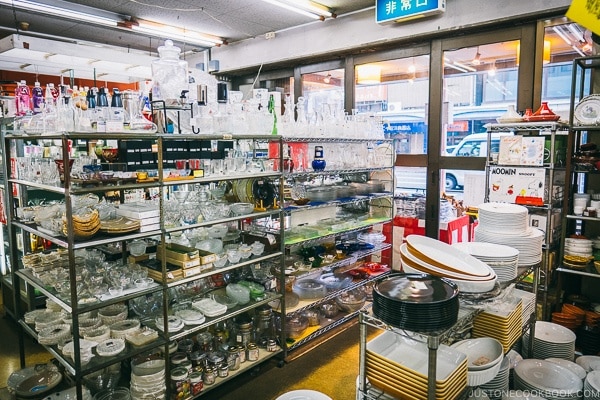
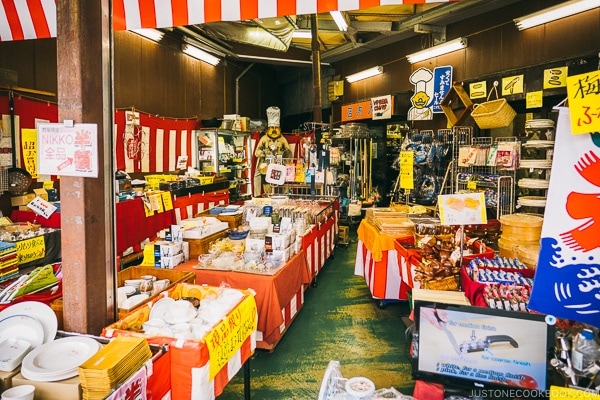
Specialty Stores at Kappabashi
Many Kappabashi shops cater to restaurants and commercial needs and the specialty stores carry unique products beyond what you need in a home kitchen.
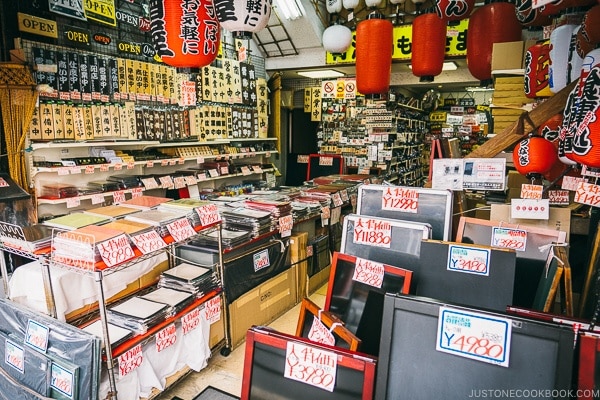
Looking to open a western theme bar or to decorate your kitchen like a classic diner, no problem! There are shops that carry just English wooden signs.
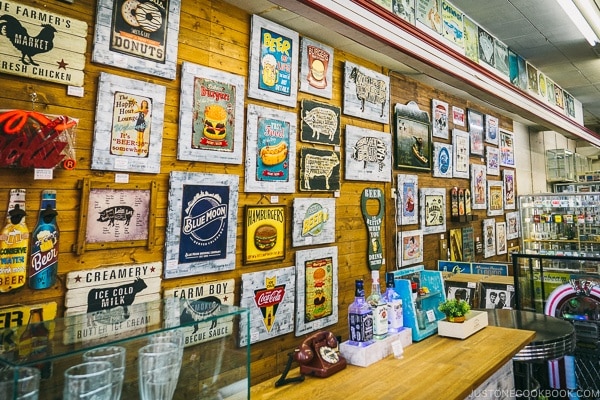
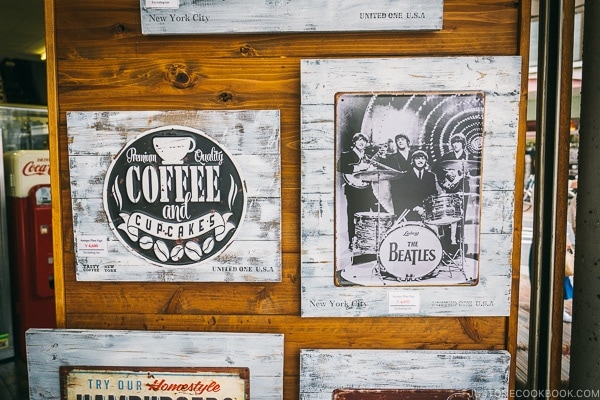
If you’re looking for good knives, stop by Kamata. They’ve been around since 1923 and carry knives for every purpose, from sashimi and chef knives to boning knives.
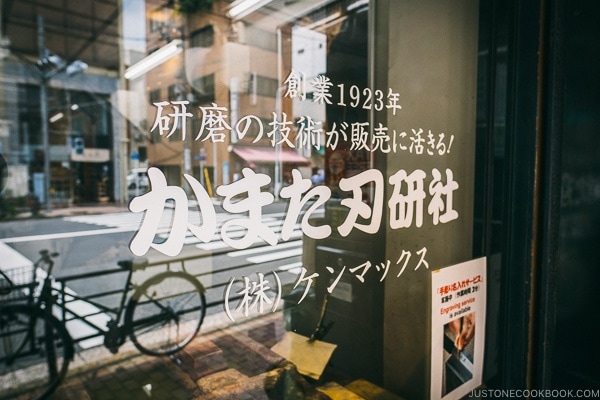
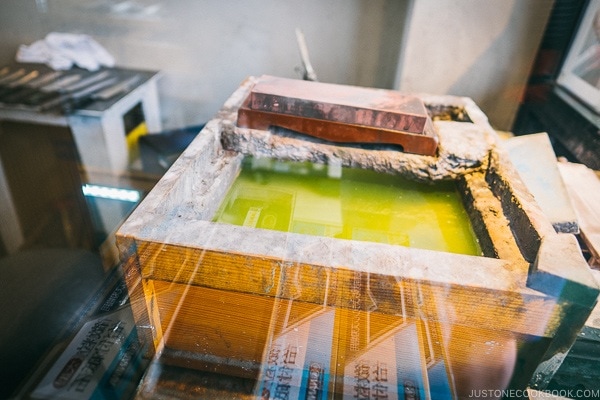
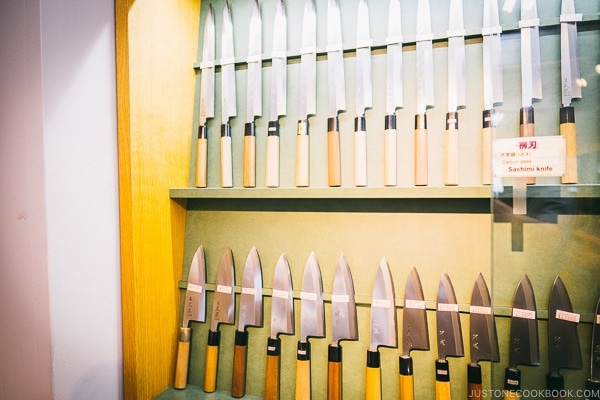
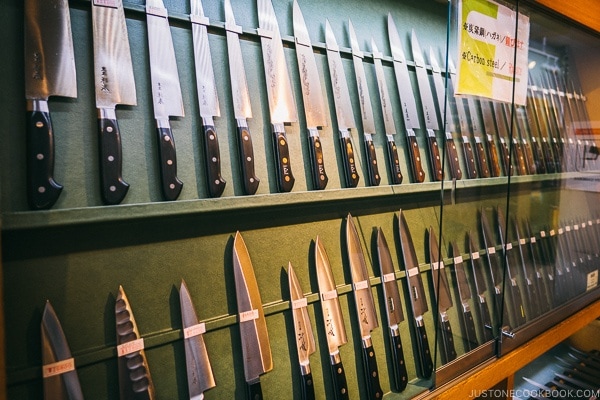
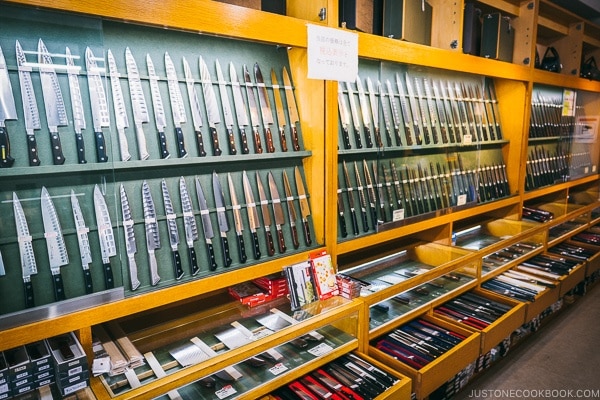
Besides cookware, there are pottery, glassware, and lacquerware specialty stores.
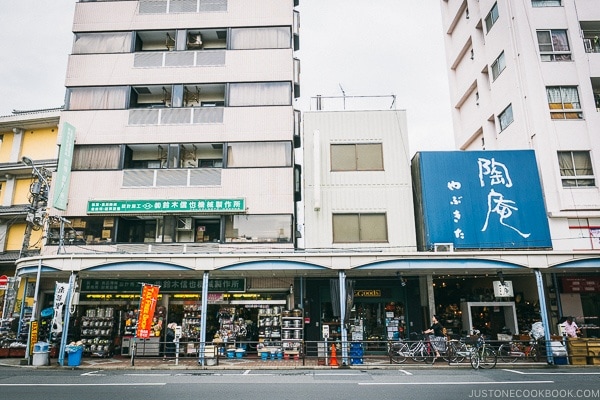
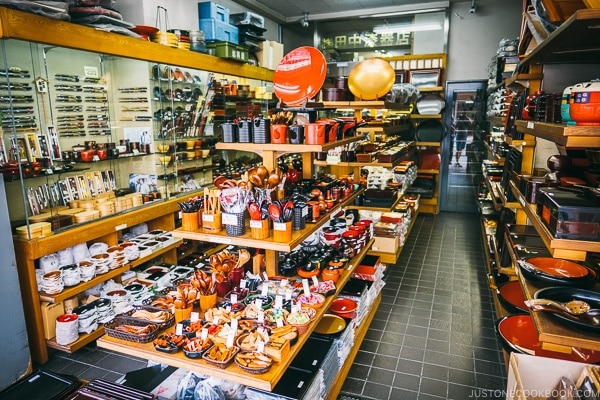
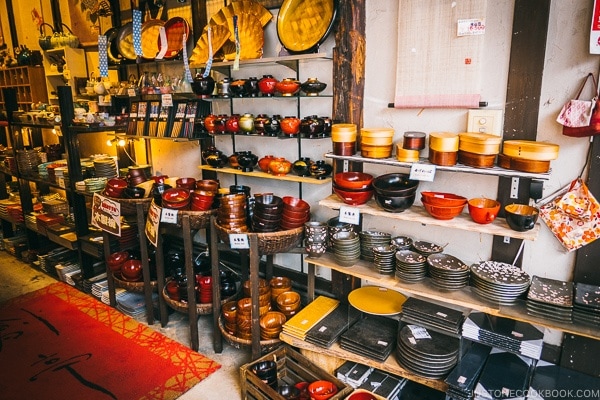
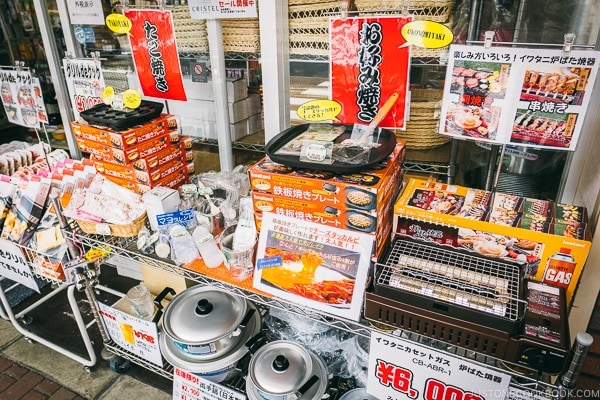
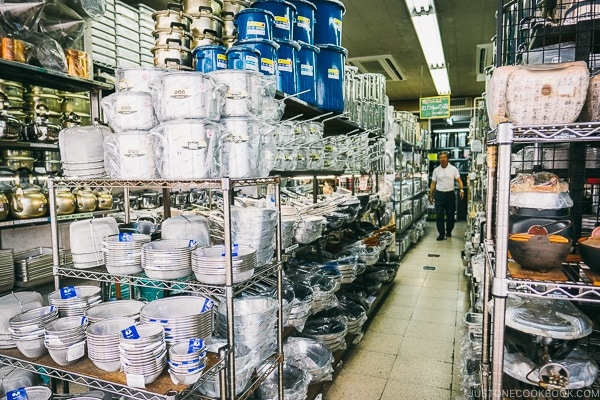
Varieties of Kitchen Product at Kappabashi
What separates Kappabashi from other kitchen supply shops is the varieties and all sizes of the product you’re looking for. When you go to a kitchenware shop in the US like Sur la Table or William Sonoma, they might just have 1 or 2 sizes of a product. As you can see in the image below, there are over 20 Japanese BBQ grill and many more different pots for nabe alone in this one shop.
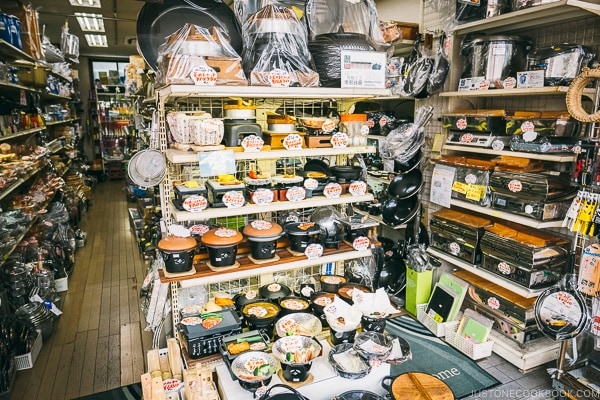
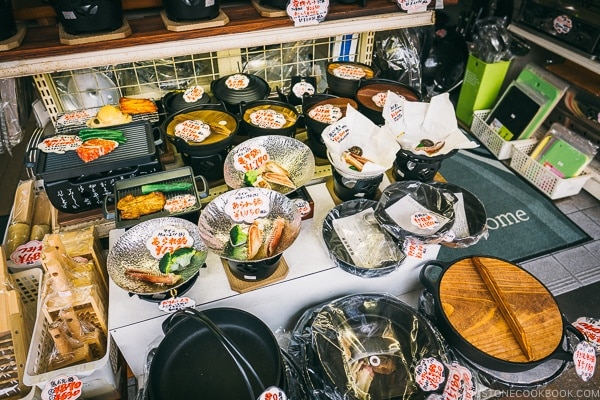
Baise Kitchen Store
One of our favorite store for kitchen and dining goods is Baise, which translates to white. The entire first floor of the store carries white everything, plates, cups, cutlery, etc.
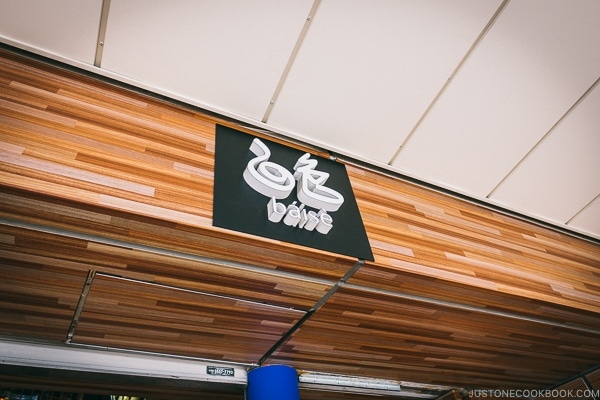
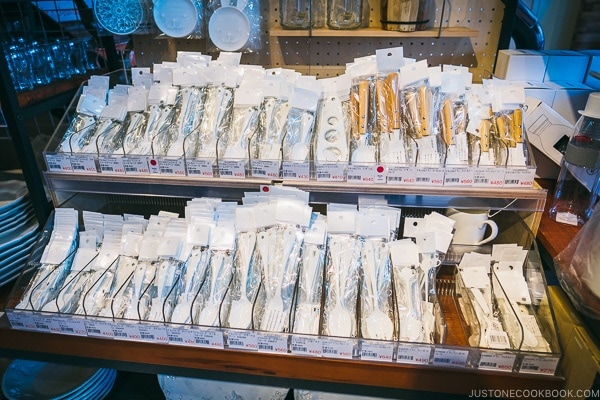
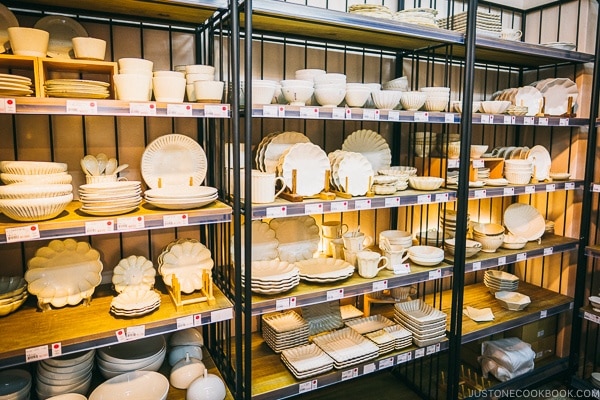
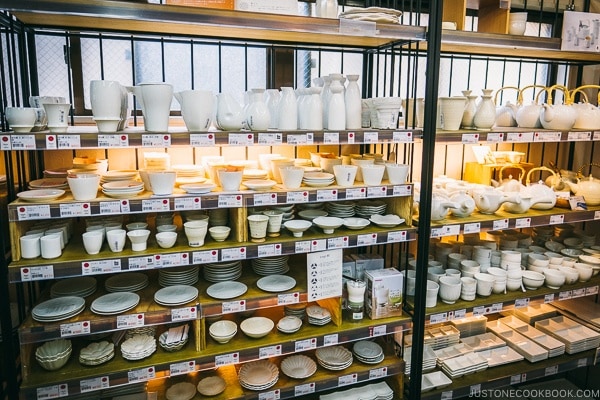
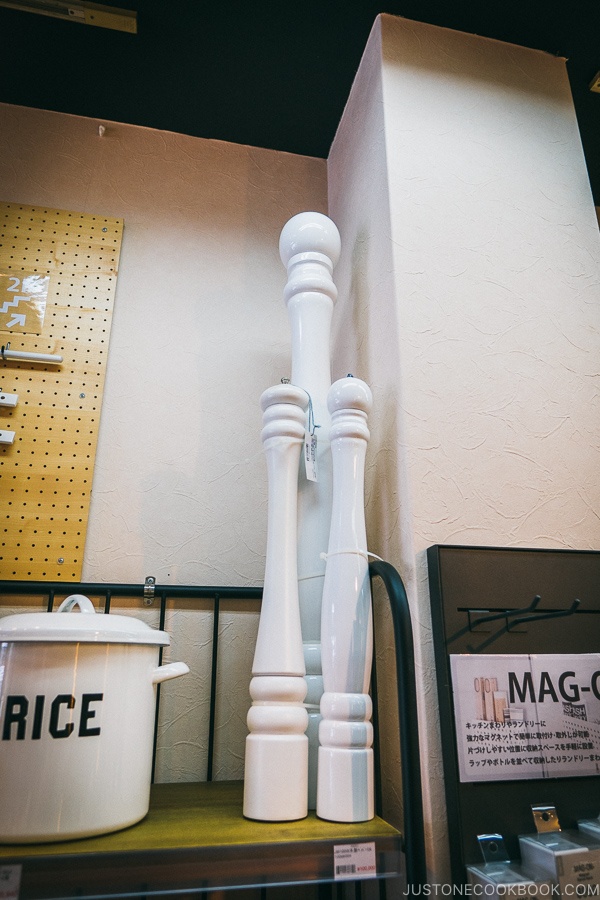
The other floors in the Baise shop are filled with glassware, furniture, etc.
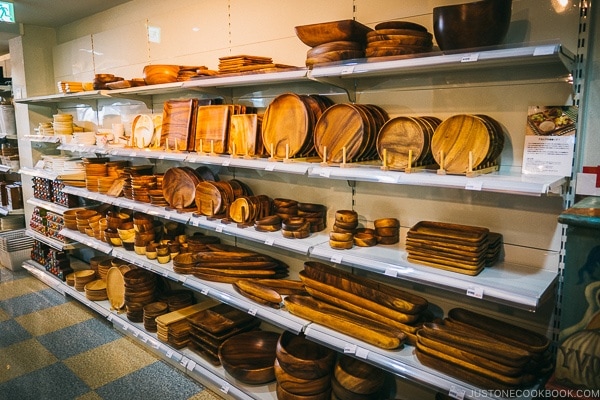
Our children got pretty bored as we were enjoying our kitchenware shopping spree. However, they were still good sports and followed along patiently.
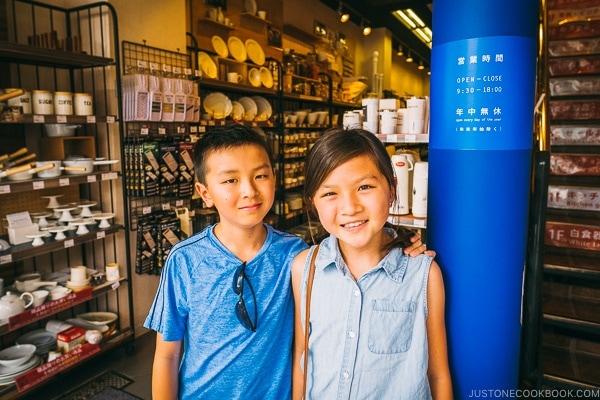
Plastic Food Sampuru at Kappabashi
Besides tools in the kitchen and dining room, Kappabashi is known for sampuru or samples, the plastic food you often see in restaurant windows in Japan.


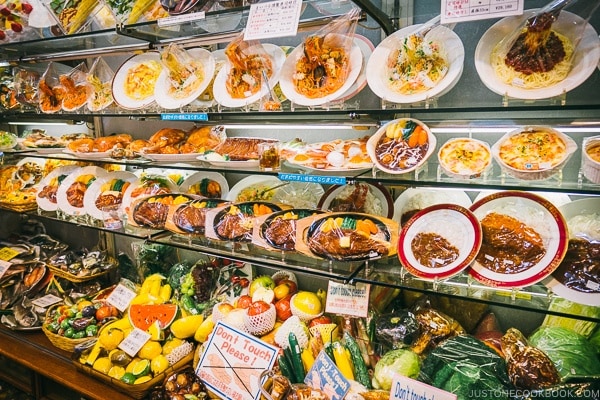
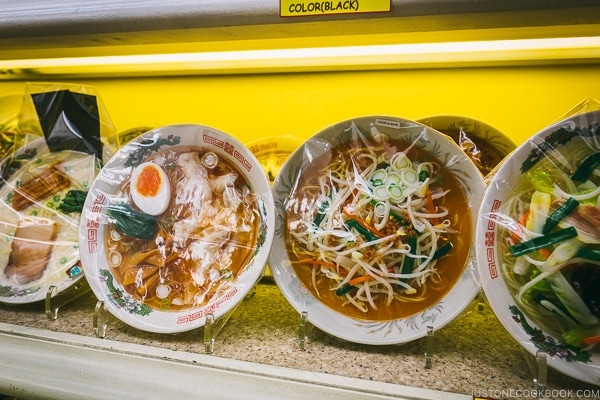
There are quite a few stores and they’re super fun to check out. The stores usually will let you know whether they are okay with photographs or not. If you don’t need any plastic food but want to take home a souvenir, you can buy plastic food phone cases, magnet, and keychains.
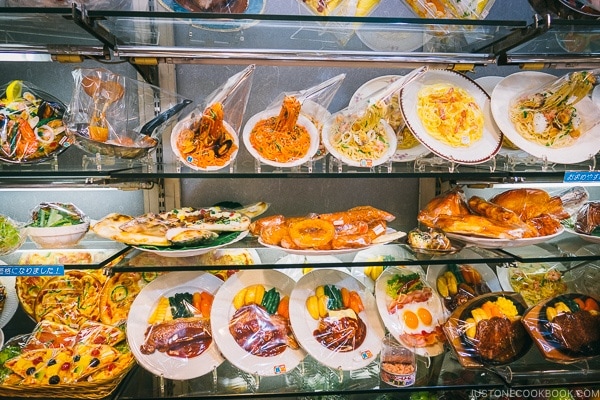
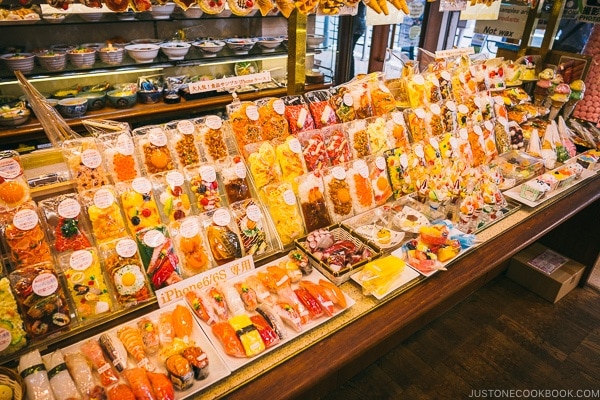

Japanese Scrubber Tawashi
Before we say goodbye, we want to introduce you to Tawashi, it’s a Japanese scrubber made from woven palm fiber that’s very useful in the kitchen. We use it to clean vegetables and other food, and it can also be useful for cleaning pots, pans, and cutting boards.
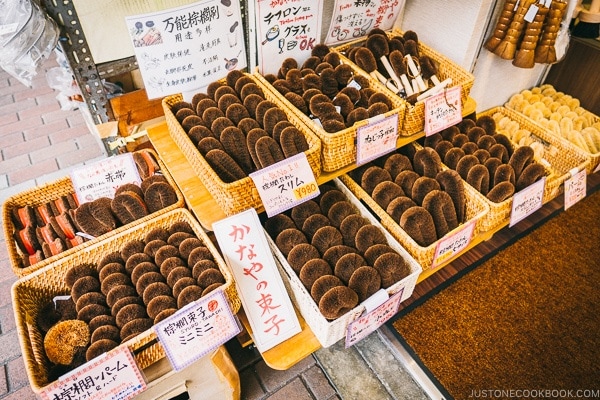

Though not as common, there are a few stores that carry western kitchen products like Niimi’s western goods store and Dr. Goods. If you are looking for western tools, it’s a good bet you’ll find it there.
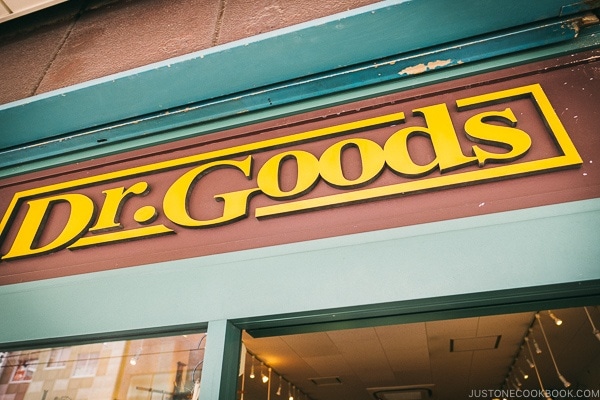
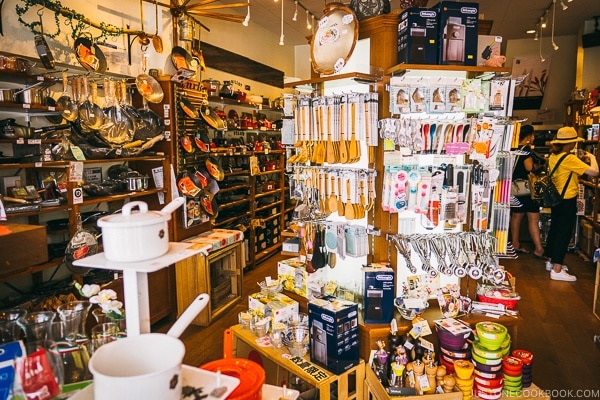
Thank you for reading our short guide on Kappabashi. You might ask how did we carry all the plates home or lugged them around the city. If we only buy 1 or 2 things from a store, we would carry them in our bags. If we purchased a lot, the store would package the plates and bowls nicely in a box and ship them to Nami’s house. Depending on how much you purchase, sometimes the shipping is free within Japan.
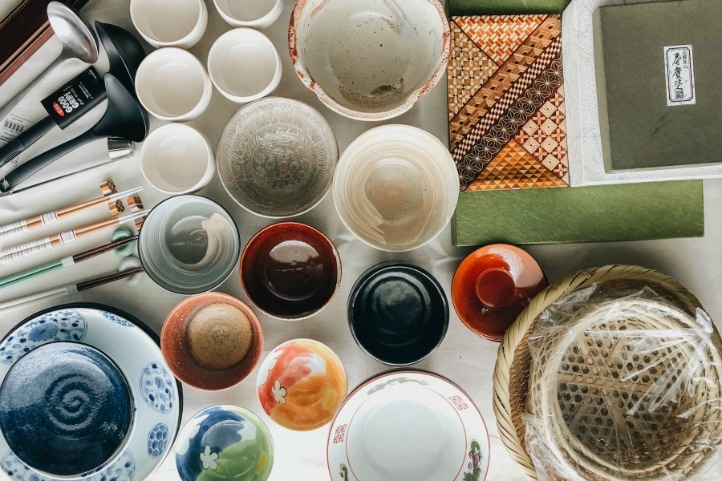
10 Cookware & Tableware You Should Get from Japan
We’ll see you soon in our next post, Tokyo Dome City where the roller coaster goes through a building. If you are interested in the rest of our Tokyo travel, here are the post links.
- Shinjuku 新宿
- Meiji Jingu 明治神宮
- Harajuku and Omotesando 原宿・表参道
- Shibuya 渋谷
- Roppongi 六本木ヒルズ
- Tokyo Tower (update) 東京タワー
- Ginza 銀座
- Imperial East Garden 皇居東御苑
- Akihabara 秋葉原
- Ueno 上野
- Kappabashi かっぱ橋道具街
- Tokyo Dome City 東京ドームシティー
- Asakusa (update) 浅草
- Tokyo Sky Tree (update) 東京スカイツリー
- Odaiba お台場


